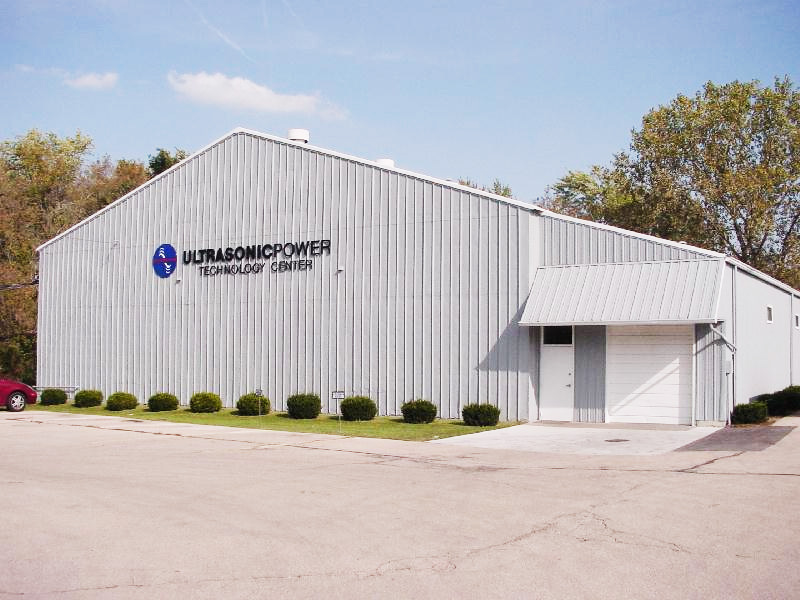Ultrasonic Parts Cleaners
Ultrasonic Power Corporation designs and manufactures high quality ultrasonic parts cleaning systems for the automotive, aerospace, and medical industries, among others.
An ultrasonic parts cleaner is ideal for removing stubborn carbon deposits, grease buildup, rust and other corrosion, and more.
When visually clean isn't enough in high precision or tight tolerance industries, our ultrasonic parts cleaners offer the perfect solution.

Benchtop Ultrasonic Parts Cleaners - Ultrasonic Parts Washers
Console Ultrasonic Parts Cleaners - Ultrasonic Parts Washers
Trusted by the Best
Why Use an Ultrasonic Parts Cleaner?
When it comes to cleaning delicate or hard-to-reach parts, ultrasonic cleaners are a popular choice. Unlike manual cleaning, ultrasonic parts cleaning uses high frequency sound waves to create millions of microscopic bubbles. These bubbles rapidly expand and collapse, creating a powerful scrubbing action that can remove even the most stubborn dirt and grime.
In addition, ultrasonic cleaners are gentle enough to use on delicate parts without damage. As a result, they are an ideal choice for anyone looking for a fast, effective way to clean parts.
Why Choose Ultrasonic Power Corp for Your Ultrasonic Parts Cleaner?
UPCorp is renowned as the premier manufacturer of ultrasonic parts cleaners. Every item is designed and manufactured in the USA and comes with a competitive warranty. Aside from being highly durable and reliable, our parts cleaners are extremely easy to set up and operate.
Key features of our parts cleaners include patented generators and Vibra-bar transducers. Units come in a range of sizes and configurations and can be custom-made to your unique specifications.
Want to learn more? Contact us today to find out how our systems can provide you with the precision cleaning you need.
Articles & Resources on Ultrasonic Parts Cleaning
What is an ultrasonic parts washer?
An ultrasonic parts washer is a powerful cleaning tool that uses ultrasonic sound waves to cleanse objects of dirt, grime, and other build-up. This type of cleaner is often used in industrial and commercial settings to clean parts and machinery quickly and effectively. Ultrasonic parts cleaners typically consist of a tank filled with a cleaning solution, an ultrasonic generator, and a basket or rack to hold the objects being cleaned. Ultrasonic sound waves create cavitation bubbles in the liquid that agitate and break up dirt and grime on the surfaces of objects being cleaned.
How do you use ultrasonic parts washers?
To use an ultrasonic parts washer, the parts to be cleaned are placed in a basket and submerged in a tank containing the cleaning solution. Once the unit is switched on, ultrasonic waves will cause cavitation bubbles to form and clean the surface of the parts. After the cleaning cycle is complete, the parts may be subjected to additional cycles including rinsing and drying.
Do ultrasonic parts cleaners work?
In general, ultrasonic cleaners are effective at removing most types of dirt and grime. With the right cleaning solution, they can even remove very heavy deposits of carbon, grease, and rust.
What fluid do you use in an ultrasonic cleaner?
A wide variety of fluids can be used in ultrasonic cleaners. Water is safe and effective for some types of general cleaning. However, water will not remove all types of dirt and grime, so a solvent or detergent may be necessary for more difficult cleaning jobs. It is important to choose an ultrasonic cleaning solution that is compatible with the material of the object being cleaned, as some cleaning solutions can damage certain materials. When in doubt, consult the owner's manual for your ultrasonic cleaning system or speak to an expert.
What can you not put in an ultrasonic cleaner?
When cleaning items with an ultrasonic cleaning machine, it’s important to know what not to put in the unit. Certain delicate materials can be damaged by the ultrasonic waves. In addition, items that are heat-sensitive, such as certain plastics and rubbers, should not be placed in a sonic parts cleaner. These materials can melt or distort when exposed to the temperatures generated by the cleaning process. Finally, it is important to avoid putting flammable liquids, such as certain solvents and oils, in an ultrasonic cleaner, unless the unit is designed for use with flammable materials. These liquids can ignite when exposed to the powerful ultrasonic waves, posing a serious fire hazard.
Can ultrasonic cleaning damage parts?
When it comes to cleaning delicate parts, ultrasonic cleaning is often the best option. This type of cleaning uses high-frequency sound waves to create a cavitation effect. This means that tiny bubbles are formed and then collapse, creating a scrubbing action that can remove even the most stubborn dirt and grime. However, ultrasonic parts cleaning is not without its risks. Always check with an expert if you have any doubts about the compatibility of your part with ultrasonic cleaning.
Does ultrasonic cleaning damage metal?
This type of cleaning is often used on delicate items like jewelry, electronic components, and medical instruments. Sonic parts cleaners are also commonly used in the automotive and aerospace industries, and for passivating stainless steel. While ultrasonic parts cleaning is generally safe for most metals, there are some exceptions. For instance, some metals are not compatible with certain ultrasonic cleaning solutions. In addition, ultrasonic cleaning can cause pitting and corrosion on metals if they are not properly rinsed and dried afterwards.
Will an ultrasonic cleaner damage plastic?
Many people choose ultrasonic cleaners for cleaning delicate items because they are gentle and effective. However, some people worry that the high frequency sound waves will damage plastic. While it is true that ultrasonic cleaners can damage certain types of plastic, most plastics are safe to clean with this method. The most common type of plastic, polyethylene terephthalate (PET), is not affected by ultrasonic waves. However, softer plastics, such as polyvinyl chloride (PVC), can be damaged by ultrasonic cleaners. As a result, it is important to check the manufacturer's instructions before using an ultrasonic parts washer on any type of plastic.









